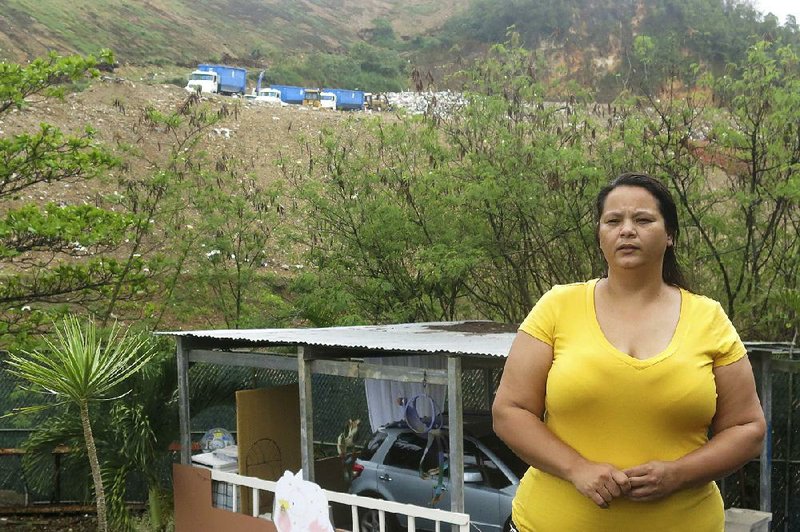TOA BAJA, Puerto Rico -- Landfills across Puerto Rico are over capacity and are groaning under tons of liquefied garbage seeping into the tropical soil and posing threats to people and the environment, according to the U.S. Environmental Protection Agency.
Nineteen of the island's 29 landfills are violating federal laws, yet they still accept a large portion of the 8,500 tons of garbage that Puerto Ricans generate daily. The EPA has ordered local officials to close 13 of those landfills because of the health risks they pose, but a decade-long economic crisis has prevented that from happening.
One of the landfills ordered closed is roughly 10 steps from Yahaida Porrata's home in Villa Albizu, near Puerto Rico's north coast.
"You have no idea what it's like to gulp in that smell 24 hours a day, 365 days a year," Porrata said. "You have to shutter the house completely because you can't breathe. ... If I had the money, I would have moved a long time ago."
But Puerto Rico is struggling to restructure a $70 billion public debt load that has forced the government to declare a state of emergency as its revenue dwindles. Officials say they are barely covering the costs of essential services such as education, health and public safety.
Municipalities say they simply don't have the $3 million to nearly $30 million needed to implement the environmental and engineering measures to close a landfill. The government never required municipalities to set aside money for closures, according to the EPA. As a result, landfills keep expanding beyond their capacity as garbage piles up.
"This is a crisis," said Carmen Guerrero, director of the EPA's Caribbean environmental protection division. "This is one of the agency's environmental priorities in Puerto Rico and the Caribbean."
The EPA has the authority to intercede when there's an emergency situation, but it is Puerto Rico's Environmental Quality Board that is supposed to ensure that landfills comply. It is not clear why this hasn't happened. Spokesman Aniel Bigio did not return multiple messages seeking comment.
Only two of the 13 landfills the EPA ordered closed have done so, while two others, including the one in Toa Baja, where Villa Albizu is located, opened new areas that meet federal requirements. The EPA filed its most recent order of closure this month, and for the first time it was done unilaterally, meaning there is no room for negotiation with the municipality like in previous cases.
"The conditions are so critical and the threat so great to the population and environment that there was no other choice," Guerrero said.
The order states the landfill in Toa Alta, just south of Toa Baja, must close by year's end, something that residents there are celebrating. There are more than 100 homes and businesses within 400 yards of the landfill, which was originally built in a sinkhole that forms part of one of the largest and most productive groundwater sources in Puerto Rico. The landfill has since expanded 3 acres outside its boundaries and lacks a system to collect liquefied garbage, control stormwater runoff or monitor the groundwater to ensure it is not contaminating drinking water.
A water treatment plant that lies downstream from the landfill draws some 2 million gallons of water daily from a nearby river. The plant is closed and being renovated so it can draw up to 3 million gallons a day, raising concerns among residents in that area.
"This is the biggest environmental disaster I've ever seen in my life," said Concetta Calise, who lives near the landfill and recently fought off a plague of flies. "I could not even open the door. It was horrible. I've never seen it like that before."
A Section on 04/22/2017

